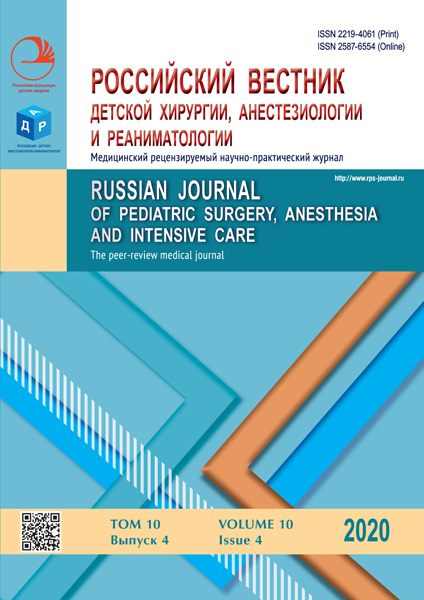Osteosarcoma of III metacarpal bone in a 13-year-old girl (case report)
- Authors: Savlaev K.F.1, Petrichenko A.V.1, Nishonov D.K.1, Ivanova N.M.1, Sharoev T.A.1
-
Affiliations:
- V.F. Voyno-Yasenetsky Scientific and Practical Center of Specialized Medical Care for Children\
- Issue: Vol 10, No 4 (2020)
- Pages: 445-451
- Section: Case reports
- URL: https://journal-vniispk.ru/2219-4061/article/view/122928
- DOI: https://doi.org/10.17816/psaic700
- ID: 122928
Cite item
Full Text
Abstract
Osteosarcoma is the most common primary malignant neoplasm of bones in children; this tumor accounts for 50 to 80% of all skeletal sarcomas. Less often, osteosarcoma affects flat bones (scapula, ribs, bones of the skull and pelvis), bones of the foot, hand and spine.
Description of the observation. A 13-year-old girl, 8 months before admission to the clinic, began to complain of pain in her right hand, six months later, a swelling appeared in this area. After radiography, which revealed a bone tumor of the III metacarpal bone, a trepanobiopsy with histological examination was performed. Conclusion: subperiosteal telangiectatic osteosarcoma G II. The child was admitted to the oncology department in November 2018. Before the operation, the girl underwent 4 courses of chemotherapy, as a result of which the tumor reduced in size, which made it possible to perform organ-preserving surgical treatment — extirpation of the third metacarpal bone affected by the tumor, followed by autoplasty from the wing of the right iliac bone with fixation of the graft Kirschner needles. The postoperative period passed without complications. As a result of the operation, it was not only possible to radically remove the tumor, but also to preserve 3 fingers of the right (working) hand with good functionality. After surgery, the child received 5 courses of polychemotherapy and is currently in remission.
Conclusion. The above observation demonstrates the possibility of performing organ-preserving surgeries using bone autoplasty for rare tumor lesions of the metacarpal bones. This method is more physiological in comparison with the use of allo- or artificial grafts.
Keywords
Full Text
##article.viewOnOriginalSite##About the authors
Kazbek F. Savlaev
V.F. Voyno-Yasenetsky Scientific and Practical Center of Specialized Medical Care for Children\
Author for correspondence.
Email: k.savlaev@mail.ru
ORCID iD: 0000-0002-1857-2870
SPIN-code: 2707-7451
http://npcmed.ru
Cand. Sci. (Med.), Senior Researcher, Science Department
Russian Federation, 38, Aviatorov street, Moscow, 119620Anna V. Petrichenko
V.F. Voyno-Yasenetsky Scientific and Practical Center of Specialized Medical Care for Children\
Email: a.shvarova@mail.ru
ORCID iD: 0000-0001-6876-7898
Dr. Sci. (Med.), scientific secretary
Russian Federation, 38, Aviatorov street, Moscow, 119620Dilmurod K. Nishonov
V.F. Voyno-Yasenetsky Scientific and Practical Center of Specialized Medical Care for Children\
Email: dnishonov@mail.ru
Cand. Sci. (Med.), pediatric oncologist
Russian Federation, 38, Aviatorov street, Moscow, 119620Nadejda M. Ivanova
V.F. Voyno-Yasenetsky Scientific and Practical Center of Specialized Medical Care for Children\
Email: det.onco.ivanova@rambler.ru
Dr. Sci. (Med.), professor
Russian Federation, 38, Aviatorov street, Moscow, 119620Timur A. Sharoev
V.F. Voyno-Yasenetsky Scientific and Practical Center of Specialized Medical Care for Children\
Email: timuronco@mail.ru
ORCID iD: 0000-0002-5505-3068
Dr. Sci. (Med.), professor, Head of Science Department
Russian Federation, 38, Aviatorov street, Moscow, 119620Supplementary files
















